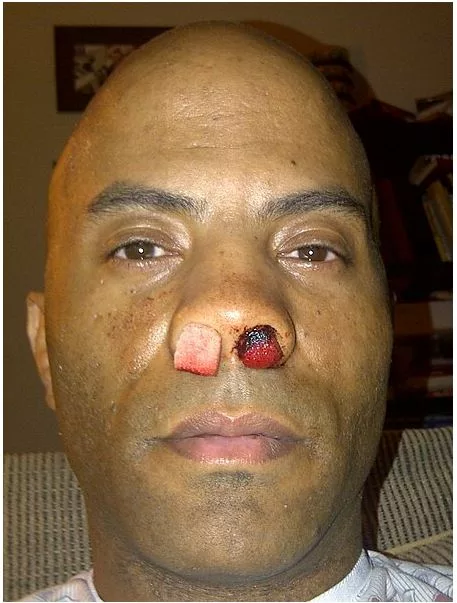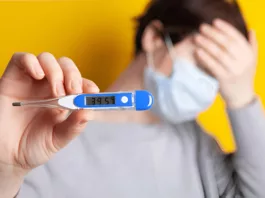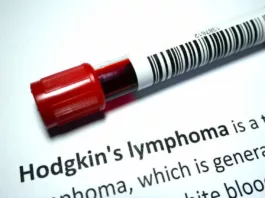What are Nosebleeds?
Nosebleeds, medically known as epistaxis, refer to bleeding from the tissues inside the nose. While a nosebleed often affects only one nostril, it can sometimes involve both.
Epixtaxis is a relatively common condition. Approximately 60% of people will experience a case of epistaxis in their life. They are rarely severe conditions and usually don’t require medical attention. Only about four people out of 2.4 million deaths in the US are from nosebleeds.1Tabassom A, DAHLSTROM JJ. Epistaxis. [Updated 2022 Sep 12]. In: StatPearls [Internet]. Treasure Island (FL): StatPearls Publishing; 2023 Jan-. Available from: https://www.ncbi.nlm.nih.gov/books/NBK435997/
Who gets Epistaxis?
Certain factors can make epistaxis more likely.2Nosebleed causes and treatments. Nhsinform.scot. Published 2019. https://www.nhsinform.scot/illnesses-and-conditions/ears-nose-and-throat/nosebleed Nosebleeds are more common in children 2 to 10 years of age and elderly people from 50 to 80 years of age. Children are more likely to experience nosebleeds due to foreign object insertion, dry air, colds, and allergies. In the elderly, nosebleeds are more likely due to atherosclerosis (hardening of arteriolar walls), reduced clotting, and high blood pressure. Other factors that make epistaxis more likely include:
- Pregnancy leads to the dilation of blood vessels. This may cause thinning and a break in vessel walls. (Blood vessels in the nose are already fragile).3Dugan-Kim M, Connell S, Stika C, Wong CA, Gossett DR. Epistaxis of pregnancy and association with postpartum hemorrhage. Obstet Gynecol. 2009;114(6):1322-1325. doi:10.1097/AOG.0b013e3181bea830
- Blood thinning medications.
- Blood Clotting diseases, including Hemophilia and Von Willebrand disease.
Types Of Nosebleeds
There are two types of Nosebleeds: Anterior and Posterior.4UpToDate. www.uptodate.com. Accessed October 4, 2023. https://www.uptodate.com/contents/nosebleeds-epistaxis-beyond-the-basics/print Anterior bleeds are more common and rarely serious, while Posterior bleeds are rarer and more likely to be serious.
Anterior Nosebleeds
Anterior nosebleeds start at the front of the nose and result in blood flowing through the nostrils. These nosebleeds generally involve the “Kiesselbach’s plexus.” Kieselbach’s plexus is a network of five arteries that supply the nasal septum. They are easier to treat and are likely to involve only one nostril. They are more common in children.
Posterior Nosebleeds
Posterior nosebleeds originate toward the back of the nasal passage, closer to the throat. They are presumed to involve the “Woodruff’s plexus.” These nose bleeds may lead to significant blood loss. They are more likely to need medical attention and are often more difficult to manage. Posterior nosebleeds are more common in adults. They are more likely to involve both nostrils and may lead to complications like aspiration or airway compromise.
Causes Of Nosebleeds
Nosebleeds occur due to the rupture of blood vessels in the inner lining of the nose. Commonly, they may occur spontaneously due to dry or hot environments. The drier inner lining is more likely to bleed when irritated. Other causes5Cleveland Clinic. Nosebleeds (Epistaxis): Types, Causes, Treatment & Prevention. Cleveland Clinic. Published October 23, 2019. https://my.clevelandclinic.org/health/diseases/13464-nosebleed-epistaxis of nasal blood vessel rupture include:
- High Blood Pressure
- Infections like colds and sinusitis may lead to repeated bouts of sneezing, coughing, and nose-blowing.
- Allergies, both allergic and nonallergic rhinitis, can cause inflammation in the nasal lining.
- Medications such as aspirin and other blood thinners.
- Malignancy, tumors, and other growths in the nose, such as polyps.
- Trauma to the nose, either external or internal, such as insertion of foreign objects, nose picking, etc.
- Recreational drug use, such as cocaine and other inhalable substances.
- Exposure to chemical irritants in cleaning supplies, workplace fumes, and strong odors.
- A deviated septum or an abnormal nasal wall shape.
- Frequent use of nasal sprays and medications like antihistamines and decongestants, which can dry out nasal membranes.
- Surgical procedures involving the nose, such as rhinoplasty. (Bleeding complications are rarer for nonsurgical rhinoplasty.)
If the patient is on Anticoagulants or has a bleeding disorder, then bleeding time will increase.
Symptoms of a Nosebleed
If you have a nosebleed, the most common symptom is bleeding from the nostrils. Some cases of epistaxis may have rarer symptoms due to the location of the bleeding. For example, posterior nosebleeds may lead to blood flowing down the back of the throat. This may lead to a metallic taste in the mouth or even blood being coughed out (hemoptysis).
How Are Nosebleeds Diagnosed?
Nosebleed diagnosis requires proper history and evaluation by a physician. He may ask you questions regarding the amount and frequency of the nosebleed. He may also ask about medication history and even inquire about family disorders.
Healthcare providers diagnose nosebleeds using a systematic approach. Clinical evaluation may comprise a physical exam. The doctor will conduct the physical exam with the patient in a seated position. A speculum is inserted to visualize the source of bleeding. A headlamp will generally illuminate the nares. Certain cases may require the use of an endoscope. This examination is done to differentiate between an Anterior or Posterior nosebleed.
Anterior bleeding is diagnosed by visualizing the source using a nasal speculum and light. Physicians use topical anesthetics and epinephrine to control bleeding and improve visualization. If initial measures prove ineffective, or if you cannot identify a bleeding source, diagnose posterior bleeding.
How To Manage And Treat Nosebleeds?
Management depends on whether the nosebleed is Anterior or Posterior.6Womack JP, Kropa J, Jimenez Stabile M. Epistaxis: Outpatient Management. Am Fam Physician. 2018;98(4):240-245.
Anterior Nosebleeds:
The outpatient management of anterior epistaxis starts with conservative management to control bleeding. This involves the assessment of airway patency to ensure the bleeding doesn’t cause airway obstruction. Afterward, the following treatment options are available:
Compressive Therapy
Involves firm pressure on both nostrils below the nasal bones for 10-15 minutes. You can spray Oxymetazoline (Afrin) or apply it with cotton buds to help reduce bleeding. After performing compressive therapy, conduct an inspection of the nares to check for signs of ongoing bleeding or hematomas. Hematoma evacuation may be necessary. This is done via blowing the nose, suction, irrigation, or forceps.
Vaso-Occlusive Therapy
Direct vaso-occlusive therapy is done if bleeding persists after compressive therapy. This involves cauterization using either Silver nitrate sticks or Electrical desiccation. Silver Nitrate sticks create a chemical cautery when applied in a circumferential pattern around the bleeding site after achieving relative hemostasis. Electrical desiccation in a similar pattern is also effective in controlling nasal bleeding. Excessive cauterization can lead to nasal mucosa ulceration. Relative hemostasis is necessary for this approach to succeed, as brisk bleeding can wash away silver nitrate before cauterization.7Schlosser RJ. Clinical practice. Epistaxis. N Engl J Med. 2009;360(8):784-789.
Anterior Nasal Packing
Brisk bleeding may warrant Anterior nasal packing. In cases where cauterization may not be practical, traditional nasal packing involves inserting layers of cotton strips soaked in petroleum jelly into the nasal cavity base to achieve full compression. This method effectively controls bleeding, but approximately 15% of patients experience rebleeding. Alternatively, you can use nasal tampons or balloon packing. Leaving the nasal packing in place for 48 hours is common, and healthcare practitioners often prescribe oral and topical antibiotics to prevent potential infectious complications despite limited evidence supporting antibiotic use.
Posterior Nosebleeds:
Posterior epistaxis usually presents as brisk bleeding. Visualizing the bleeding site is more difficult in these cases. First, airway patency and stabilization are ensured. These patients may then require referrals to an otolaryngologist or physicians trained in posterior nasal packing.o
Posterior Nasal Packing
This involves using a balloon catheter, Foley catheter, or red rubber catheter with cotton packing. You can insert the catheter through the nostril, pass it down the nasopharynx, and into the oropharynx. Inflate the balloon with 8 to 10 mL of water, then gently retract it until it rests in the posterior nasal choana. If cotton packing is used, withdraw the rubber catheter from the mouth after it becomes visible in the oropharynx. Secure the packing to the catheter’s end, and then pull it back through the mouth to position it in the choana. Maintain traction by clamping the area outside of the nostril and placing padding between the clamp and the nasal ala (“wings of the nose”) to minimize the risk of alar necrosis.
Posterior packing can be associated with pain and carries a risk of aspiration if dislodged, often necessitating patient monitoring in the hospital. Posterior nasal packing is extremely effective when performed correctly. This procedure is associated with more complications. It may require admission, telemetry, and sometimes intubation. Lastly, endoscopic artery ligation and endovascular embolization may be used. Surgical interventions are more effective than packing.8Soyka MB, Nikolaou G, Rufibach K, Holzmann D. On the effectiveness of treatment options in epistaxis: an analysis of 678 interventions. Rhinology. 2011;49(4):474-478. doi:10.4193/Rhino10.313 Endoscopic treatment may be preferred over embolization due to cost.
Other treatments may be required depending on the cause of nasal bleeding. For example, bleeding due to a foreign body will require foreign body removal, bleeding due to nasal fracture or deviated septum will require surgery, etc.

How Can Nosebleeds Be Prevented?
Taking care of the inner lining of the nose and avoiding triggers like allergies, the urge to pick your nose, etc., can reduce the likelihood of a nosebleed. Other measures include:
- Using saline nasal spray or drops in each nostril 2-3 times a day.
- Use a humidifier in your bedroom to add moisture to the air.
- Apply water-based nasal gels or ointments with a cotton swab.
- Avoid forceful nose blowing and sneezing with an open mouth.
- Don’t insert solid objects into your nose.
- Limit medications like aspirin and ibuprofen that can increase bleeding.
When To Consult A Physician For Epistaxis?
If you have repeated epistaxis, then this may be a sign of other medical conditions. For example, Children with Allergic Rhinitis are more likely to suffer from recurrent nosebleeds.9Murray AB, Milner RA. Allergic rhinitis and recurrent epistaxis in children. Ann Allergy Asthma Immunol. 1995;74(1):30-33. Secondly, if your nosebleed is profuse and does not stop. For example, a posterior nosebleed due to trauma that refuses to stop bleeding even after applying pressure. Other conditions that may require medical consultation for epistaxis include severe trauma, vomiting of blood, etc.
What causes Nosebleeds while sleeping?
Nosebleeds at night happen for the same reasons they do in the daytime: dry air, allergies, and infections that harm the soft lining inside your nose. This irritation may lead to a break in the vessel wall, which in turn leads to bleeding.
Headache and Nosebleed
Headaches and nosebleeds often have common causes. Factors such as dry air, allergies, or upper respiratory infections can trigger them. A deviated septum, where the nasal wall shifts, can also cause both symptoms, along with blocked nostrils, facial pain, and noisy breathing during sleep. Other less common but serious causes of both conditions include congenital heart diseases, leukemias, brain tumors, essential thrombocythemia (increased platelets), and Head injuries. Pregnancy is also associated with both conditions. One study found an association between nosebleeds and migraines in HHT patients.10Elphick A, Shovlin CL. Relationships between epistaxis, migraines, and triggers in hereditary hemorrhagic telangiectasia. Laryngoscope. 2014;124(7):1521-1528. doi:10.1002/lary.24526
What is the relation between Leukemias and Epistaxis?
Epistaxis rarely may be the sign of an underlying pathology. These can include hereditary bleeding disorders or malignancies like leukemia.11 Cingam SR, Koshy NV. Acute Promyelocytic Leukemia. [Updated 2023 Jun 26]. In: StatPearls [Internet]. Treasure Island (FL): StatPearls Publishing; 2023 Jan-. Available from: https://www.ncbi.nlm.nih.gov/books/NBK459352/
Conclusion
In conclusion, nosebleeds (epistaxis) can vary in severity and causes. They often result from factors like dry air, allergies, and medications. Understanding the type of nosebleed is crucial for proper treatment. Anterior nosebleeds are common and manageable with conservative methods, while posterior ones are rarer and may require medical attention.
Treatment for anterior nosebleeds includes compressive therapy, topical agents, vaso-occlusive therapy, and anterior nasal packing if needed. For posterior nosebleeds, ensure airway patency and opt for more advanced treatments like endoscopic artery ligation or embolization. Physicians may also consider referral to a specialist for posterior nasal packing in posterior bleeds.
Preventive measures include saline sprays, humidifiers, and avoiding harmful behaviors. Being aware of potential links between nosebleeds and other health conditions is important for timely medical advice.
Refrences
- 1Tabassom A, DAHLSTROM JJ. Epistaxis. [Updated 2022 Sep 12]. In: StatPearls [Internet]. Treasure Island (FL): StatPearls Publishing; 2023 Jan-. Available from: https://www.ncbi.nlm.nih.gov/books/NBK435997/
- 2Nosebleed causes and treatments. Nhsinform.scot. Published 2019. https://www.nhsinform.scot/illnesses-and-conditions/ears-nose-and-throat/nosebleed
- 3Dugan-Kim M, Connell S, Stika C, Wong CA, Gossett DR. Epistaxis of pregnancy and association with postpartum hemorrhage. Obstet Gynecol. 2009;114(6):1322-1325. doi:10.1097/AOG.0b013e3181bea830
- 4UpToDate. www.uptodate.com. Accessed October 4, 2023. https://www.uptodate.com/contents/nosebleeds-epistaxis-beyond-the-basics/print
- 5Cleveland Clinic. Nosebleeds (Epistaxis): Types, Causes, Treatment & Prevention. Cleveland Clinic. Published October 23, 2019. https://my.clevelandclinic.org/health/diseases/13464-nosebleed-epistaxis
- 6Womack JP, Kropa J, Jimenez Stabile M. Epistaxis: Outpatient Management. Am Fam Physician. 2018;98(4):240-245.
- 7Schlosser RJ. Clinical practice. Epistaxis. N Engl J Med. 2009;360(8):784-789.
- 8Soyka MB, Nikolaou G, Rufibach K, Holzmann D. On the effectiveness of treatment options in epistaxis: an analysis of 678 interventions. Rhinology. 2011;49(4):474-478. doi:10.4193/Rhino10.313
- 9Murray AB, Milner RA. Allergic rhinitis and recurrent epistaxis in children. Ann Allergy Asthma Immunol. 1995;74(1):30-33.
- 10Elphick A, Shovlin CL. Relationships between epistaxis, migraines, and triggers in hereditary hemorrhagic telangiectasia. Laryngoscope. 2014;124(7):1521-1528. doi:10.1002/lary.24526
- 11Cingam SR, Koshy NV. Acute Promyelocytic Leukemia. [Updated 2023 Jun 26]. In: StatPearls [Internet]. Treasure Island (FL): StatPearls Publishing; 2023 Jan-. Available from: https://www.ncbi.nlm.nih.gov/books/NBK459352/





